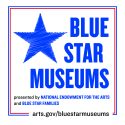In the 1980s, Howard Finster may have been the most well-known evangelical preacher in America. If you’re not familiar with Howard Finster, you may be surprised to learn that he was considered the second most popular American artist after Andy Warhol.
The most important thing to know about Finster’s art is that he considered every one of his paintings to be Christian sermons.

Talking Heads, Little Creatures, 1985, album cover art by Howard Finster. Photo: R. Freeman
Hailing from working class rural Alabama, Finster rose to national prominence on the visual vitality of his painted sermons and his charismatic personality.
Born in 1916, Finster worked odd jobs to support his family including a bicycle repair shop. But most prominently, he became a Baptist reverend and hosted a radio program in the early 1940s. He would come to realize that his congregations did not remember his sermons, so he would repeat them in either song or poetry. In the 1960s, Finster began his famous Paradise Garden; a kind of private sanctuary filled with hand-made sculptures composed of repurposed home building supplies, old bicycles, and detritus all built as “memorials to God.” Then, in 1976, Finster said God spoke to him to start painting his sermons.
Finster literally made thousands of paintings, typically with help. His colorful and joyful paintings teem with an overwhelming abundance, an endless cascading of written words and pictures of people, wildlife, farm animals, fantasy creatures, flying saucers, Jesus, angels, and celebrities and icons from pop culture, including Santa Claus, Elvis, Abraham Lincoln, and many, many more. All with hand-written sermons and life-affirming aphorisms.

Howard Finster, Burn Your Candle into Another World, 1985, oil on wood, 49”x98”x5”, Collection of Taubman Museum of Art, Photo: R. Freeman
In 1983, Finster’s art first appeared to a national audience on R.E.M.’s first music video Radio Free Europe. The video filmed the band members walking through Finster’s Paradise Garden and greeting him at the end. In 1981, Michael Stipe had met Finster while an art student in Georgia. Finster and Stipe collaborated on a painting for the 1984 album cover of R.E.M.’s Reckoning.

R.E.M., Reckoning, 1984, album cover art by Howard Finster.
Talking Heads followed suit and in 1985 commissioned Finster to make a painting for their album Little Creatures. Rolling Stone awarded Finster with the Album Cover of the Year. His sermons had reached millions.
The highly-regarded curator Marcia Tucker included Finster in her exhibit Paradise Lost / Paradise Regained: American Visions for the 1984 Venice Bienniale. Finster died in Georgia in 2001.

Detail, Howard Finster, Burn Your Candle into Another World, 1985, Collection of Taubman Museum of Art, Photo: R. Freeman
This October, Cedarhurst will host, Rural Avant Garde, a group exhibition featuring Finster. Every Finster work in the exhibit was made in collaboration with the Mountain Lake Symposium and Workshop participants. Finster’s workshops became the epitome of community artmaking and participation.
The legacy of Finster is more than the sum of his incredible life and fantastic, artistic oeuvre. Finster opened the door for other self-taught artists to be recognized into the bigger art world. Feted as the “backwoods William Blake” Finster is still revered today as the authentic, passionate artist true to his faith.





